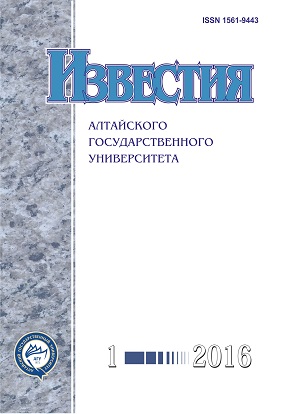A Comparative Analysis of Non-cooperative Iris Recognition Techniques
Abstract
The paper analyzes the existing localization methods in the context of non-cooperative identification. There are many advantages of such systems like usability, capacity increase, possibility of being hidden and undetected for security reasons, etc. The main problem is the poor quality of biometric data and the need for their rapid processing that requires special algorithms for processing of biometric data. The iris of an eye (iris) is currently the most promising data source for the non-cooperative systems. The iris can be scanned over a distance, has high information capacity, and remains unchanged with time. The most timeconsuming step besides the iris recognition is a localization process. The existing techniques of iris localization are selected and analyzed. Advantages and disadvantages of each technique are considered. It is shown that promising localization technique for non-cooperative systems is based on the active circuit technique. Despite its high computational complexity, the method allows to take into account a large number of factors related to the non-cooperative recognition. It is found that the success of the technique is determined by preliminary stages, for example, the correct specification of initial parameters.
DOI 10.14258/izvasu(2016)1-29
Downloads
Metrics
References
Поляков В.В., Трушин В.А., Рева И.А. и др. Региональные аспекты технической и правой защиты информации: монография. — Барнаул, 2013.
Вязьмина А.Н., Жилин С.И. Алгоритмы распознавания лиц, устойчивые к вариациям освещения и геометрических характеристик // Труды молодых ученых Алтайского гос. ун-та. — 2013. — № 10.
Третьяков И.Н., Минакова Н.Н. Алгоритм разграничения доступа по радужной оболочке глаза для решения задач контроля доступа к информационным ресурсам // Доклады Томского гос. ун-та систем управления и радиоэлектроники. — 2010. — № 1–1.
Daugman J. How Iris Recognition Works // Circuits and Systems for Video Technology, IEEE Transactions on Circuits and Systems for Video Technology. — 2004. — № 1 (14).
Tan T., He Z., Sun Z. Efficient and Robust Segmentation of Noisy Iris Images for Non-cooperative Iris Recognition // Image and Vision Computing. — 2010. — № 2 (28).
Illingworth J., Kittler J. A Survey of the Hough Transform // Computer Vision, Graphics, and Image Processing. — 1988. — № 1 (44).
Kass M., Witkin A., Terzopoulos D. Snakes: Active Contour Models // International Journal of Computer Vision. — 1988. — № 4 (1).
Daugman J. New Methods in Iris Recognition // IEEE Transactions on Systems, Man, and Cybernetics. Part B: Cybernetics. — 2007. — № 5 (37).
He Z., Tan T., Sun Z. Iris Localization via Pulling and Pushing // 18th International Conference on Pattern Recognition (ICPR’06). — 2006. — № 1.
Минакова Н.Н., Петров И.В. Информационная система анализа структуры радужной оболочки глаза // Ползуновский вестник. — 2012. — № 3/2.
Hannani A.El., Petrovska-Delacrétaz D., Fauve B., Mayoue A., Mason Guide J. To Biometric Reference Systems and Performance Evaluation // Springer Science & Business Media. — 2009.
Proenc H., Alexandre L.А. UBIRIS: A Noisy Iris Image Database // Symposium A Quarterly Journal In Modern Foreign Literatures. — 2005. — № 1.
Izvestiya of Altai State University is a golden publisher, as we allow self-archiving, but most importantly we are fully transparent about your rights.
Authors may present and discuss their findings ahead of publication: at biological or scientific conferences, on preprint servers, in public databases, and in blogs, wikis, tweets, and other informal communication channels.
Izvestiya of Altai State University allows authors to deposit manuscripts (currently under review or those for intended submission to Izvestiya of Altai State University) in non-commercial, pre-print servers such as ArXiv.
Authors who publish with this journal agree to the following terms:
- Authors retain copyright and grant the journal right of first publication with the work simultaneously licensed under a Creative Commons Attribution License (CC BY 4.0) that allows others to share the work with an acknowledgement of the work's authorship and initial publication in this journal.
- Authors are able to enter into separate, additional contractual arrangements for the non-exclusive distribution of the journal's published version of the work (e.g., post it to an institutional repository or publish it in a book), with an acknowledgement of its initial publication in this journal.
- Authors are permitted and encouraged to post their work online (e.g., in institutional repositories or on their website) prior to and during the submission process, as it can lead to productive exchanges, as well as earlier and greater citation of published work (See The Effect of Open Access).








